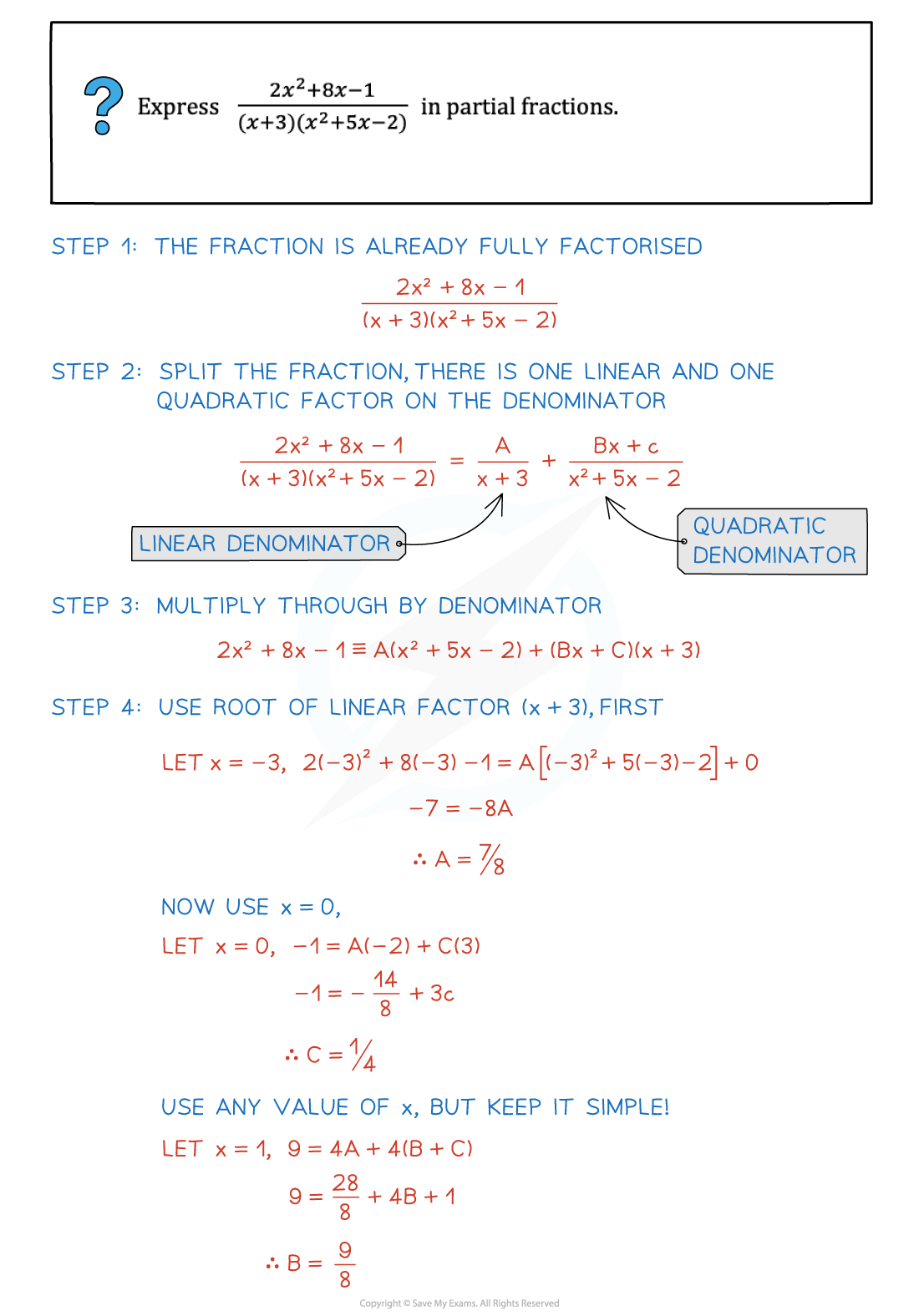Partial Fractions with Quadratic Denominators (Cambridge (CIE) A Level Maths): Revision Note
Exam code: 9709
Did this video help you?
Partial fractions with quadratic denominators
What are partial fractions with quadratic denominators?
For linear denominators the denominator of the original fraction can be factorised such that the denominator becomes a product of linear terms of the form
With squared linear denominators, the same applies, except that some (usually just one) of the factors on the denominator may be squared, i.e.
In both the above cases it can be shown that the numerators of each of the partial fractions will be a constant
For this course, quadratic denominators refer to fractions that have one linear factor and one quadratic factor (that cannot be factorised) on the denominator
the denominator of the quadratic partial fraction will be of the form
; very often
leaving it as
the numerator of the quadratic partial fraction could be of linear form,
How do I find partial fractions with quadratic denominators?
STEP 1 Factorise the denominator as far as possible (if not already done so)
Sometimes the numerator can be factorised too
STEP 2 Split the fraction into a sum with
the linear denominator having an (unknown) constant numerator
the quadratic denominator having an (unknown) linear numerator
STEP 3 Multiply through by the denominator to eliminate fractions
STEP 4 Substitute values into the identity and solve for the unknown constants
Use the root of the linear factor as a value of
to find one of the unknowns
Use
to find another one of the unknowns
Use any value of
(keep it small and simple) to find the final unknown
If the linear factor is then you'll need to use any two other values of to form simultaneous equations
STEP 5 Write the original as partial fractions
In harder problems there may be more than one linear or quadratic factor
In such cases, values of
, whatever order they’re used in, will not always eliminate all but one of the unknowns
Simultaneous equations will need to be used
Worked Example


Examiner Tips and Tricks
You can check your final answer by substituting a value of x in to both the left and right-hand sides and seeing if they’re equal
Choose a small value of x to keep things simple but not a value that would make a denominator zero

Unlock more, it's free!
Did this page help you?